The strange and serene beauty of aquascapes.
There is a fascinating place in San Francisco that I like to visit when I am in town. It is called Aqua Forest Aquarium and it is the first aquarium store in the US dedicated to the “nature aquarium style” concept and the first aquascaping shop I have ever seen in my life.
I thought aquascaping was kind of niche until I went to an aquascaping show at the magnificent Conservatory Of Flowers in Golden Gate Park last weekend. Done in collaboration with AFA and Ocean Treasures SF the show focuses on the smaller and simpler tanks, unlike the complex aquariums found at AFA , but the Conservatory is an absolute must if visiting the city.
This is what wikipedia says : Aquascaping is the craft of arranging aquatic plants, as well as rocks, stones, cavework, or driftwood, in an aesthetically pleasing manner within an aquarium—in effect, gardening under water. Aquascape designs include a number of distinct styles, including the garden-like Dutch style and the Japanese-inspired nature style. Typically, an aquascape houses fish as well as plants, although it is possible to create an aquascape with plants only, or with rockwork or other hardscape and no plants.
Although the primary aim of aquascaping is to create an artful underwater landscape, the technical aspects of aquatic plant maintenance must also be taken into consideration. Many factors must be balanced in the closed system of an aquarium tank to ensure the success of an aquascape. These factors include filtration, maintaining carbon dioxide at levels sufficient to support photosynthesis underwater, substrate and fertilization, lighting, and algae control.
Aquascape hobbyists trade plants, conduct contests, and share photographs and information via the Internet.
There are several styles of aquascaping :
Dutch style which employs a lush arrangement in which multiple types of plants having diverse leaf colors, sizes, and textures are displayed much as terrestrial plants are shown in a flower garden. This style was developed in the Netherlands starting in the 1930s, as freshwater aquarium equipment became commercially available
Japanese style or nature style which was introduced in the 1990s by Takashi Amano. Amano’s compositions draw on Japanese gardening techniques that attempt to mimic natural landscapes by the asymmetrical arrangement of masses of relatively few species of plants, and which sets rules governing carefully selected stones or driftwood, usually with a single focal point.
Iwagumi style which is a specific subtype of the nature style. The Iwagumi term itself comes from the Japanese “rock formation” and refers to a layout where stones play a leading role
Jungle style where the plants are left to assume a natural, untrimmed look. Jungle style aquascapes usually have little or no visible hardscape material, as well as limited open space.
And Biotopes which replicate exactly a particular aquatic habitat at a particular geographic location, and not necessarily to provide a gardenlike display.
The growing aquascaping community spreads out to all corners of the world. For some dreamy moments check out the results of the first Eastern European Planted Aquarium Design Contest 2013 . With names like Whisper Of the Pines, Charm Of Light, Forest Lair, Wild West, Reborn, Windtalkers : wonderful.
Examples of salt water reef aquascape and biotope aquascape

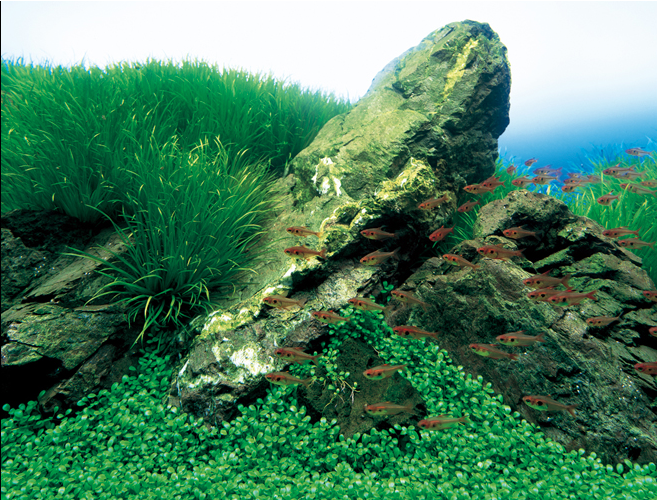
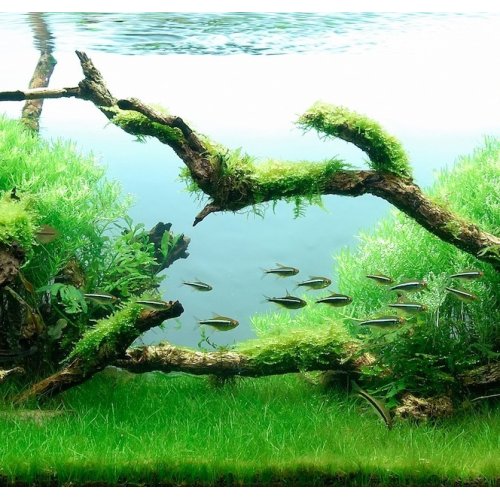
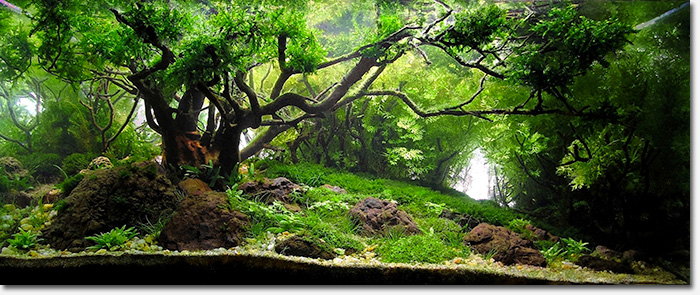


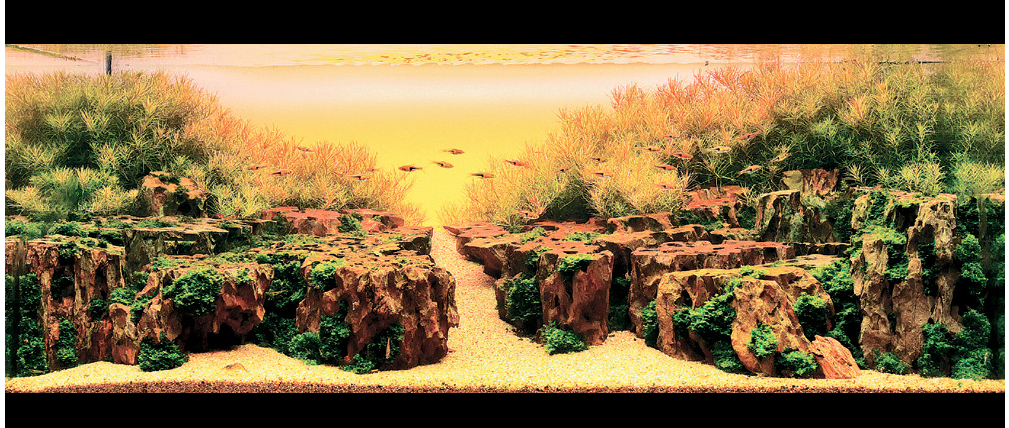
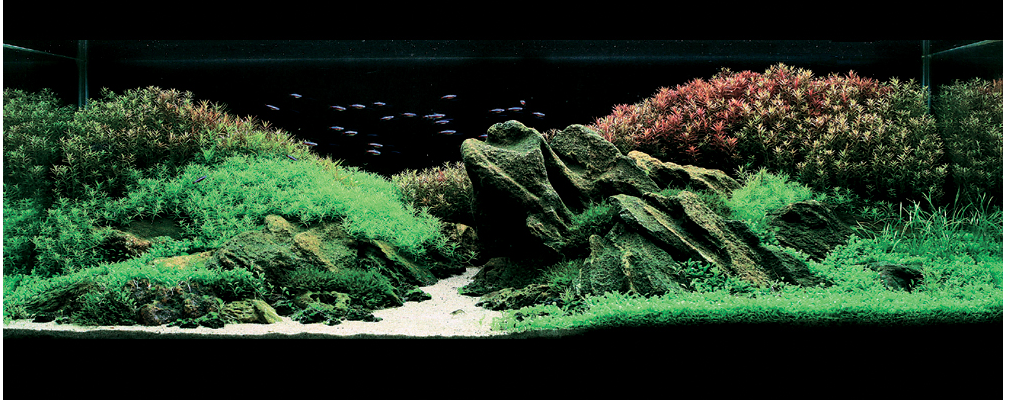
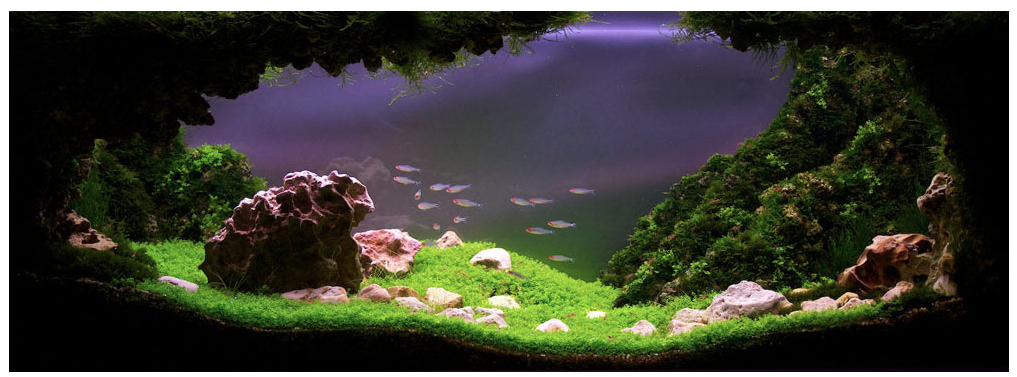



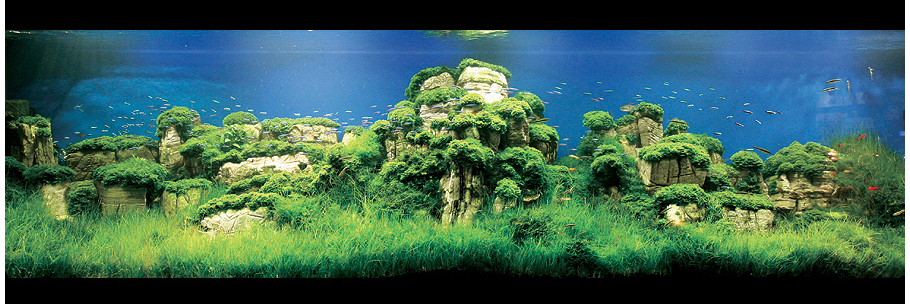
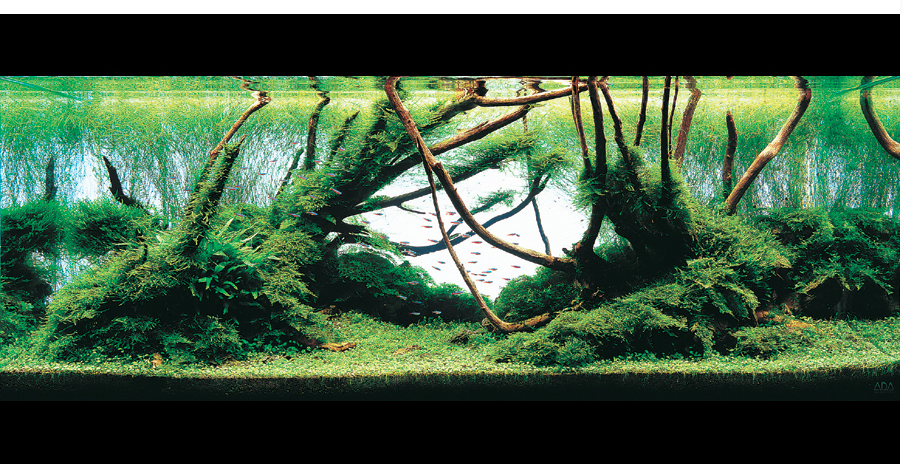

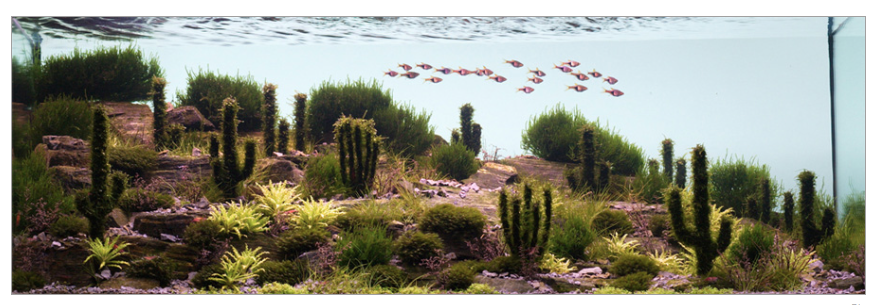

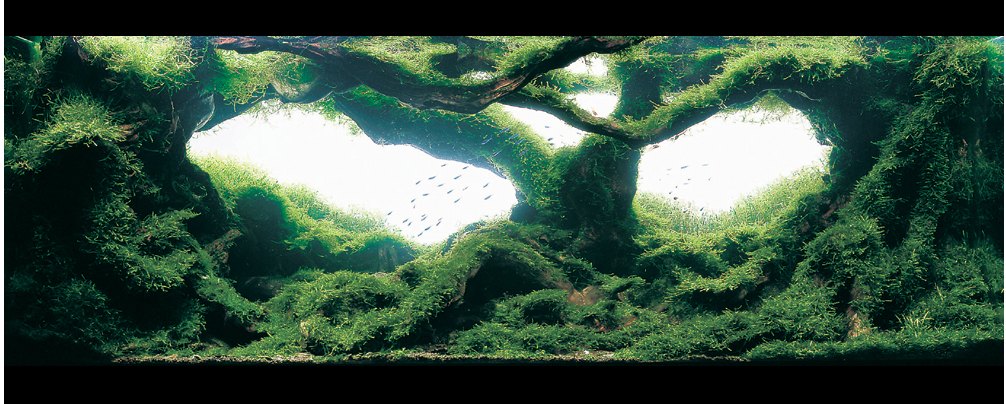
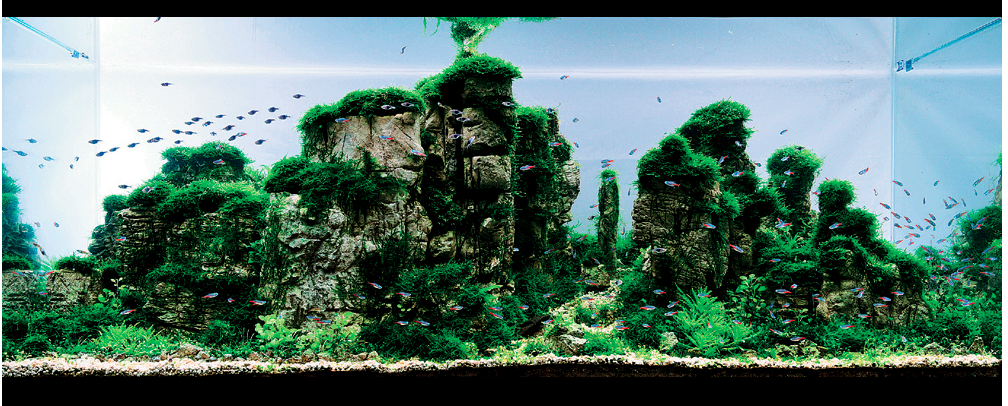
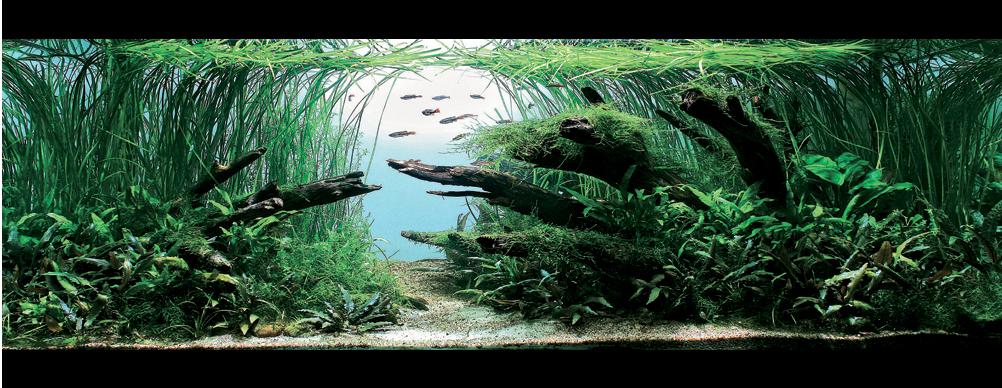
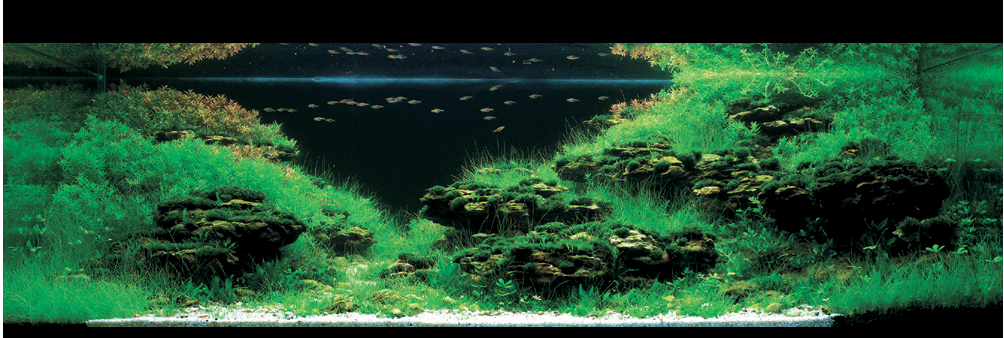
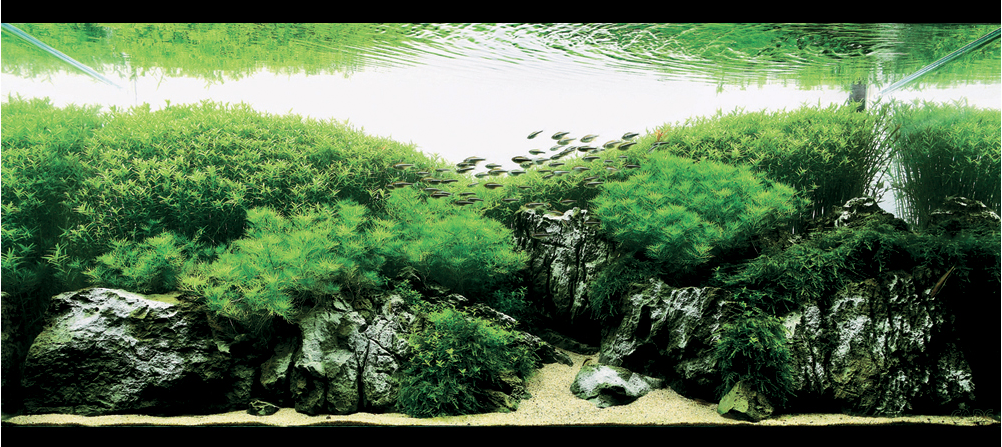
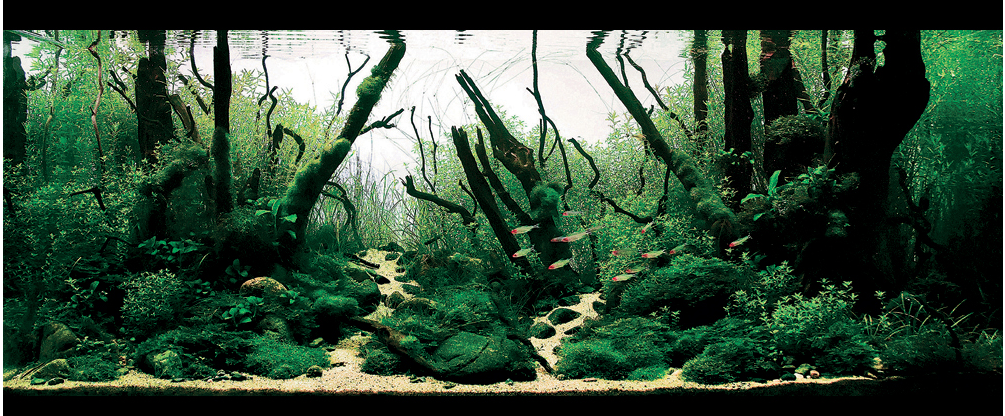
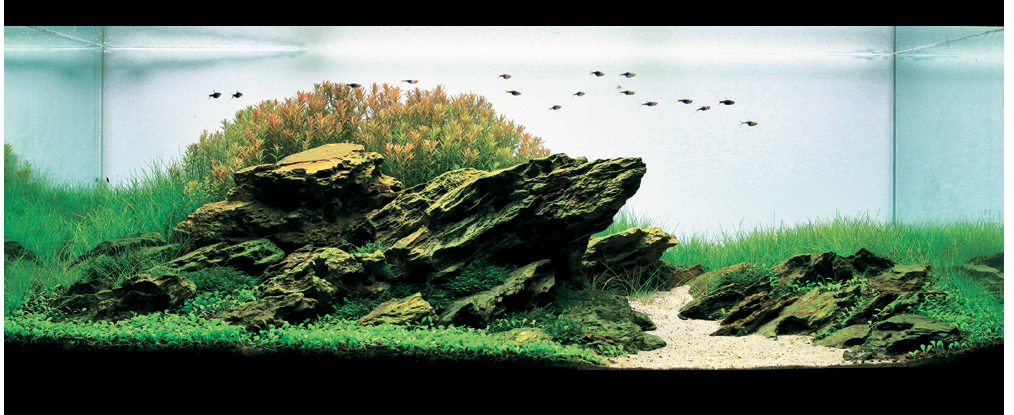
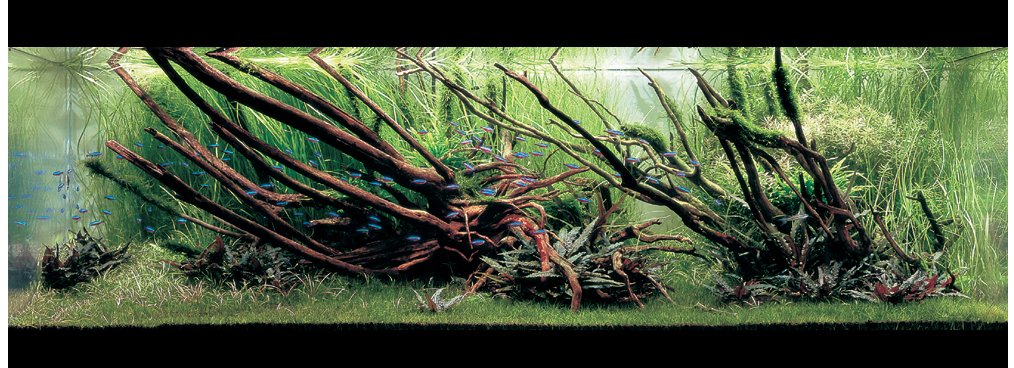

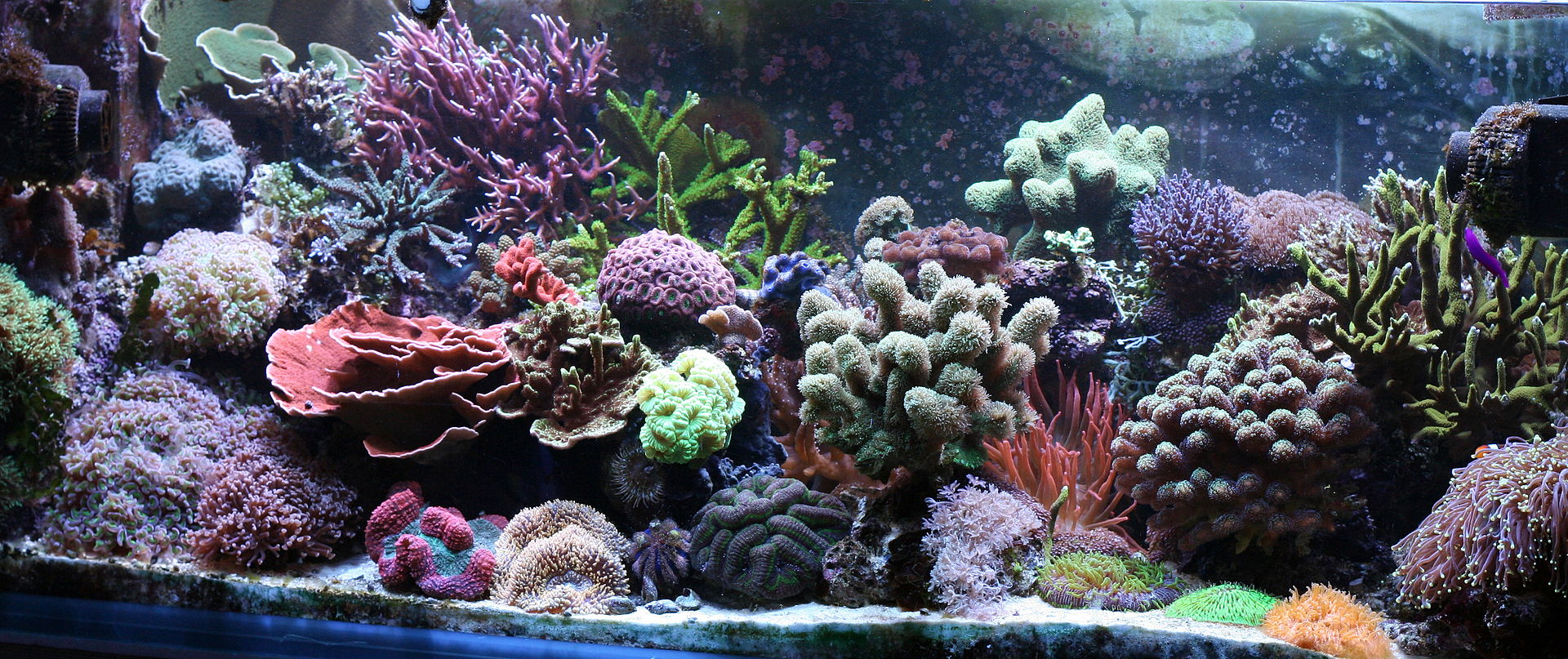
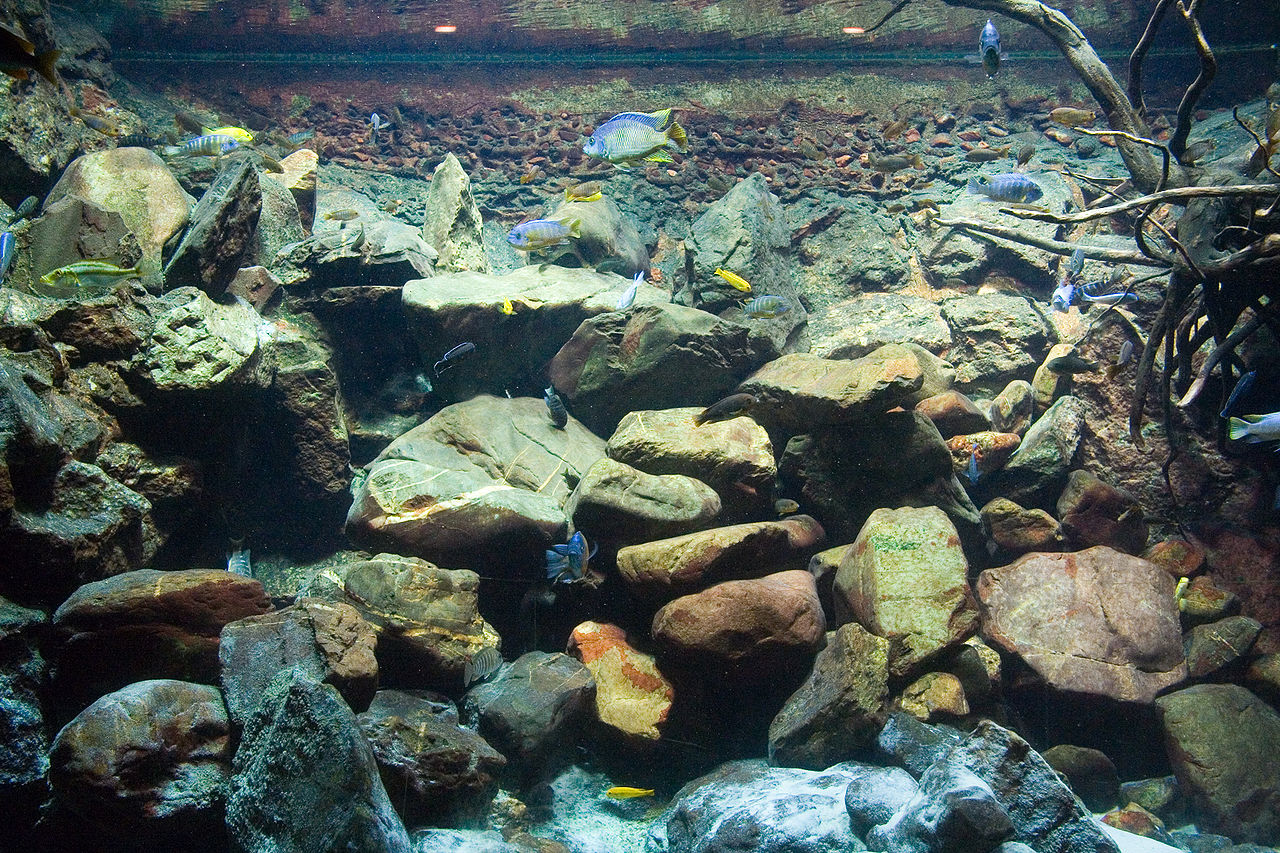
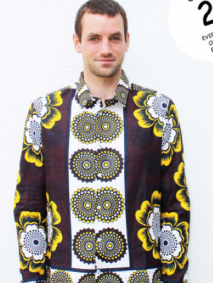
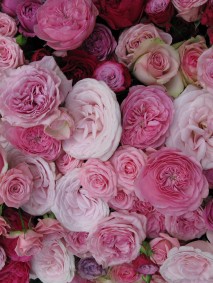
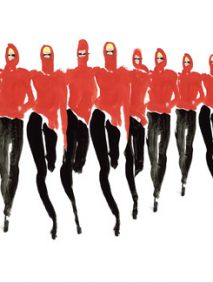
Que belleza Iginia…..que beleza¡¡¡¡¡¡¡ que armonia y que manera de construir verdaderos paisajes en miniatura. Y pensar que la imagen que usualmente tenemos de un acuario es de algo hortera.
Me encantan tus reportajes gracias. xxxxxxxx
Gracias !
algunos de estos tanques son enormes……..a lo bestia
xxxxxxx
Deseo tener aletas en lugar de piernas!!
Fascinada por estas imágenes, paisajes subactuáticos que ejercen un poder relajante y acogedor, nos convierten en algas, anémonas, peces, ¡habitantes de una pecera gigante! Esta tienda no solo debe ser única en US, sino en el mundo entero. Muchas gracias de nuevo Fashion Sphinx!
Increíbles !
Que bien construídos.
How beautiful, I hate aquariums, but this is someplace I would like to live. They have a surreal feeling, as if Alice were in Wonderland!!!
Mezmeraizing images again Eugenia… When I read the subjetc, I was not interested at all. I give it a “click” because of you… and I was… Like a beautifull show in a very good art Gallery. Only, it is no art. It is?
This is the first time in my life that i wish to be a fish floating in the magic of the land of Oz …
Thank you fot that.